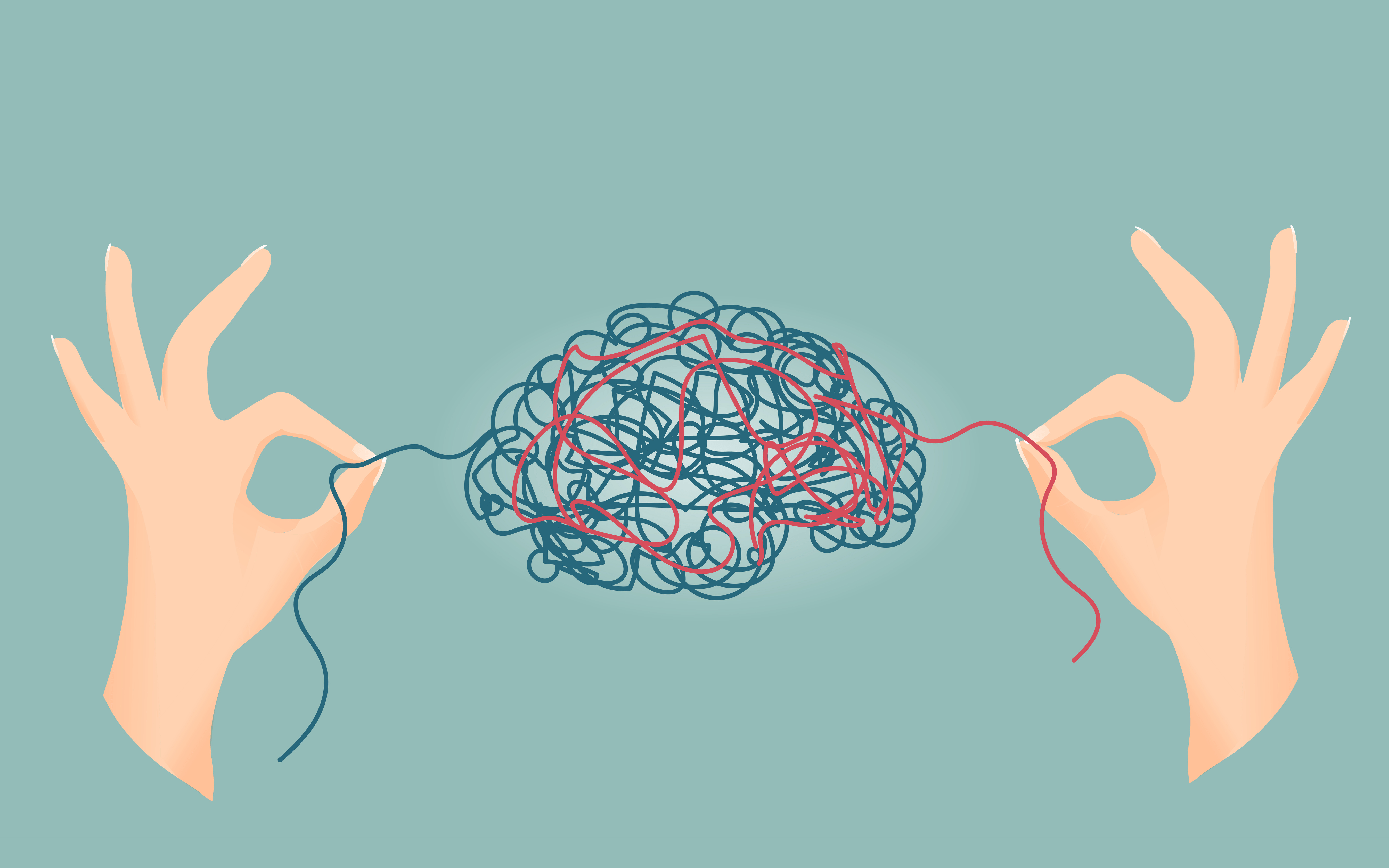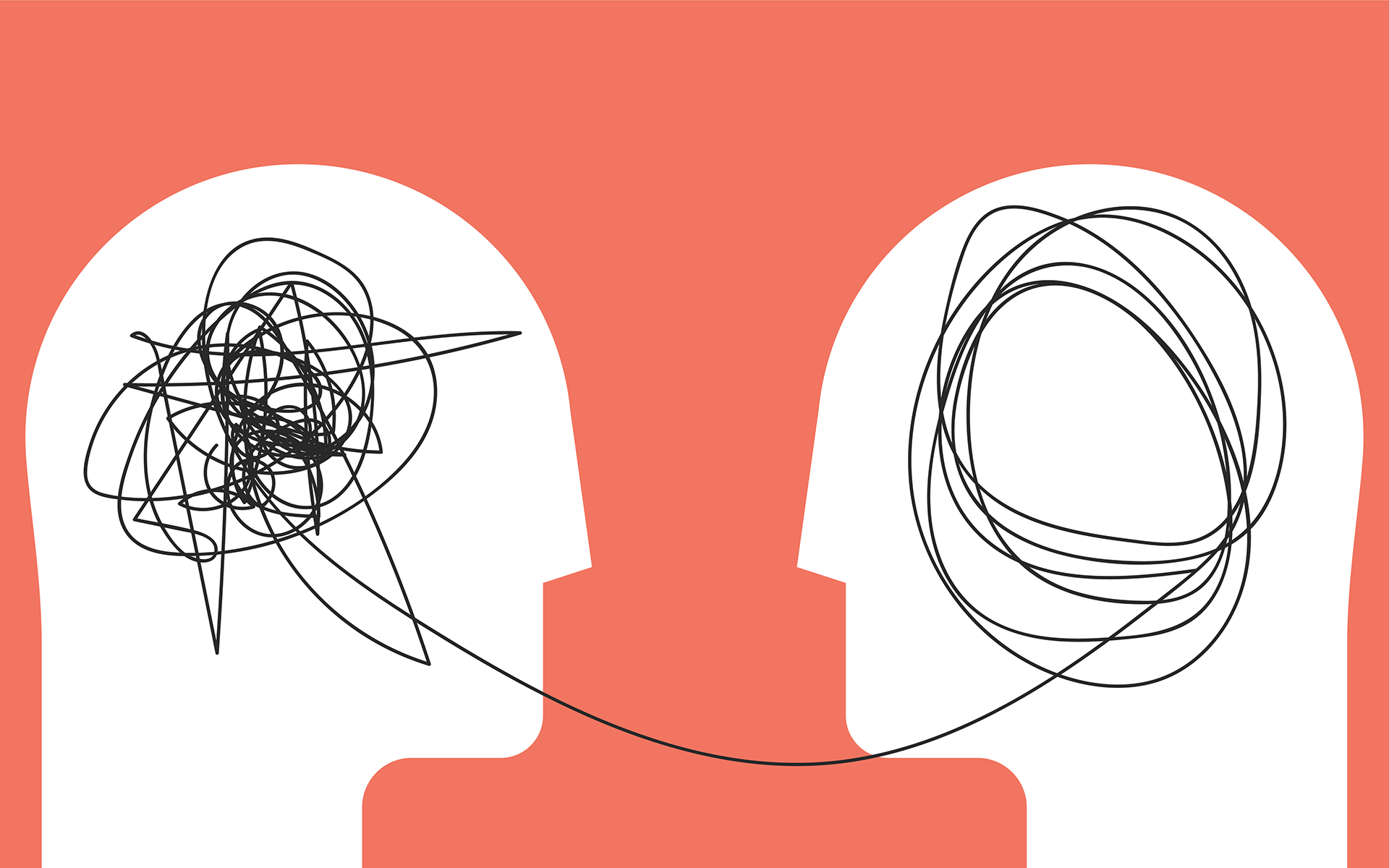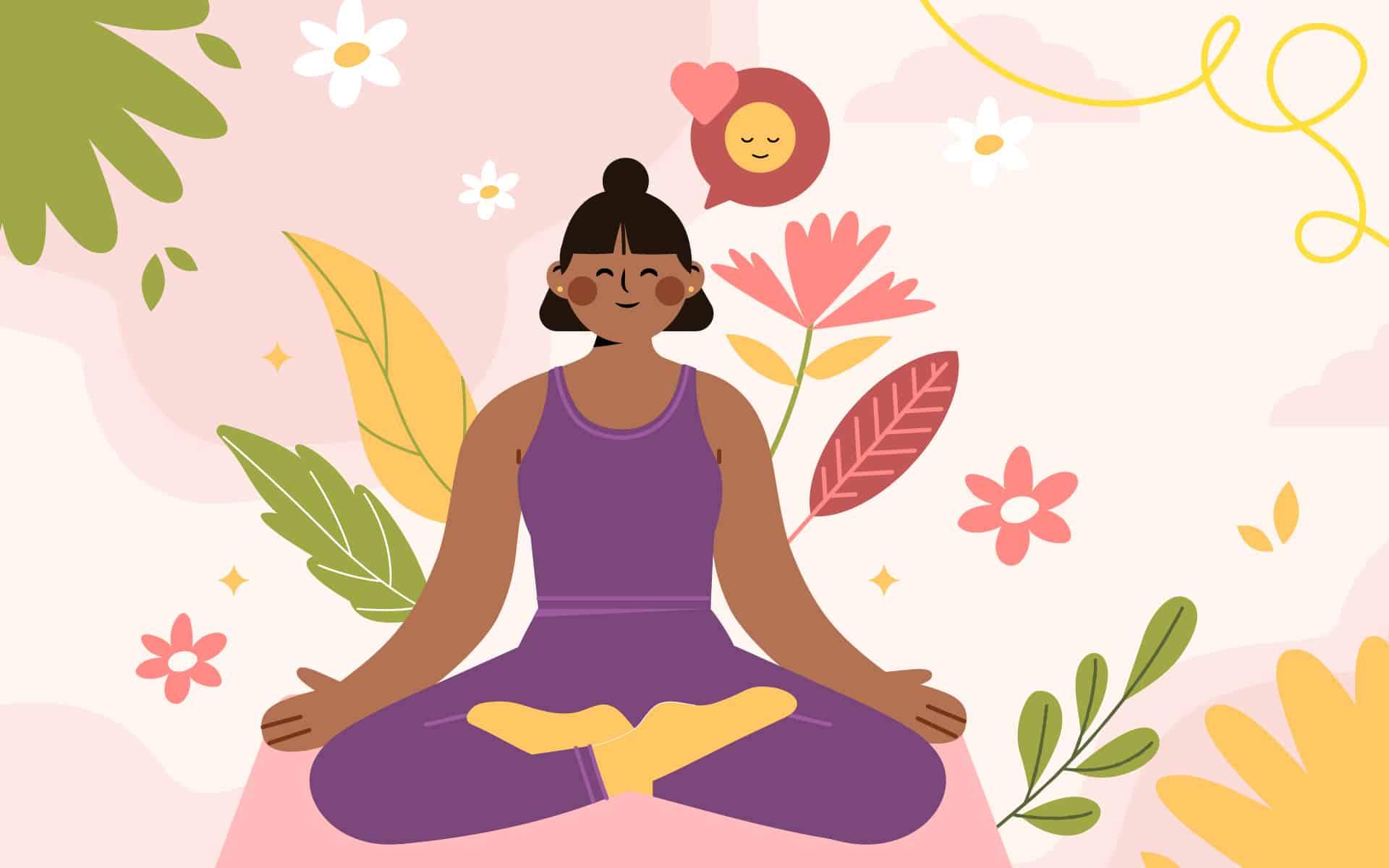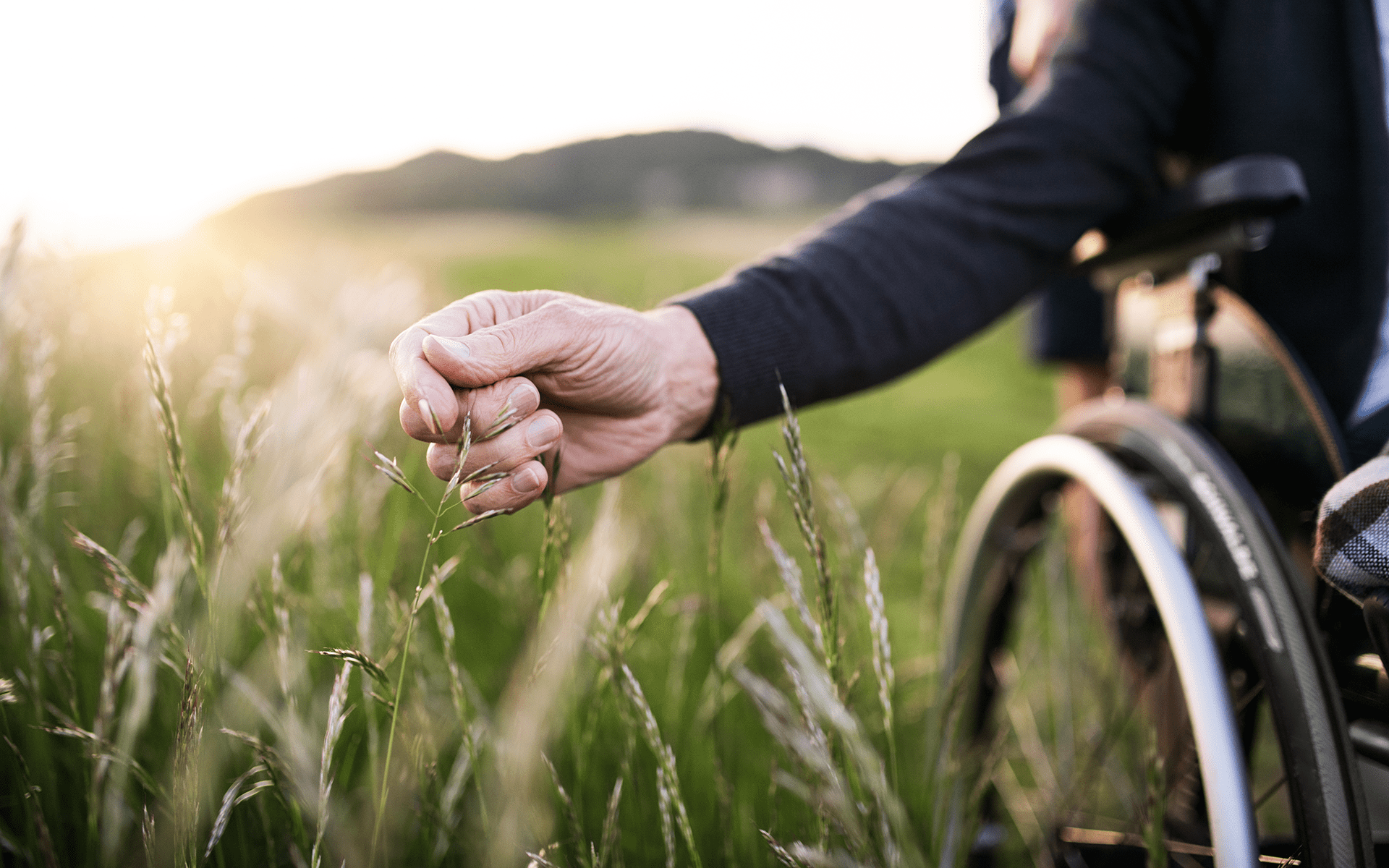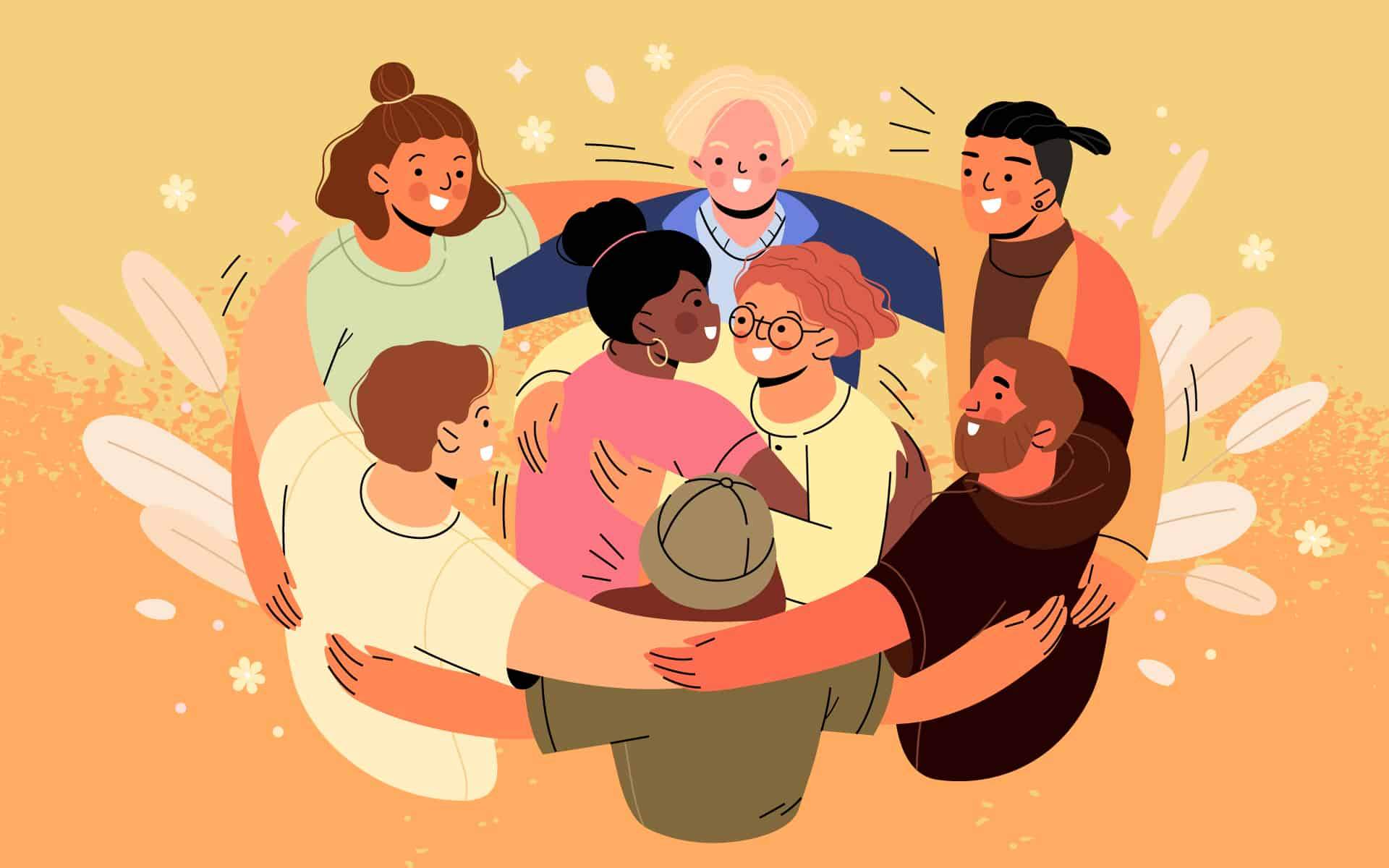Emily Johansson takes opioids to help with her myofascial pain syndrome. While the medication provides some relief from daily chronic pain, five years ago she noticed a dangerous pattern: She had begun taking them to curb her anxiety as well. Mindfulness, Emily says, helped her emerge from a very dark place. “Pain wants to control your brain and get your full attention until you give it a pain med,” she says.
Since 2016, Emily’s used techniques she learned in the Mindfulness-Oriented Recovery Enhancement (MORE) program, pioneered by University of Utah professor Eric Garland, PhD. Aimed at decreasing patients’ use (and misuse) of prescription drugs, the program teaches mindfulness and savoring techniques to ease pain and craving, while shifting awareness toward pleasant emotions. Johansson learned to “drink in” the sights, sounds, and smells in her present moment as they flow through her body. Sometimes instead of a pill, she’ll opt for a walk to the park. “When I am feeding the baby ducks and geese, I don’t think about the pain,” she says.
Pain and the Opioid Epidemic
Chronic pain—experiencing pain every day for at least three months—afflicts more than 20% of American adults. But pain itself is not the only problem. Opioids, such as oxycodone (OxyContin) and hydrocodone (used in Vicodin), are prescribed to treat chronic pain, but are highly addictive, and their misuse has skyrocketed. About two million Americans aged 12 and older have a problem with opioids—and in 2019, reported deaths from drug overdose in the US reached an all-time high of almost 72,000, with opioids involved in more than two-thirds of the total deaths, according to the CDC.
The probability of long-term opioid use rises sharply after just five days of taking them. “Most people begin with a prescription for pain relief and take opioids as prescribed by their physicians,” says Garland. But some patients “begin to slip down this cycle toward greater dependence on the drug and migrate into misuse.” The standard treatment for opioid use disorder is not without complications and controversy, and the surge of misuse and fatal overdose has prompted a much-needed examination of alternative treatments.
The Neuroscience of Opioid Addiction
Garland’s research focuses on using mindfulness therapeutically to target chronic pain and opioid use simultaneously. The results of a 2014 study, led by Garland and published in the Journal of Consulting and Clinical Psychology, showed the MORE program significantly decreased participants’ pain and opioid misuse. The number of participants who met the qualifications for opioid use disorder decreased, from the beginning of the study to its end eight weeks later, by 63%. A 2019 follow-up study, published in the journal Science Advances by Garland and colleagues, showed that for a sample of chronic pain patients who had been misusing opioids and then underwent the mindfulness intervention, the more their brains were activated by rewards such as “enjoying the beauty of nature, social connections, and positive life experiences,” the less they misused opioids in the future.
“When people get wrapped up in fighting their pain, they end up unintentionally causing suffering, which makes the subjective feeling of pain worse.”
Brandon Yabko, PHD
Garland says that one of the major theories about how and why addiction occurs asserts that, over time, drug users become hypersensitive to drug-related cues, such as “driving past a pharmacy or seeing a pill bottle, and dulled to the pleasure derived from natural, healthy rewards.” As a result, drug users lose touch with the ability to feel joy naturally, says Garland, and may “take higher and higher doses of the drug to obtain comfort and relief.”
“We need a treatment,” says Garland, “that targets not only addictive behavior but also the pain that drove the person to start taking opioids in the first place.”
More Mindfulness, Less Suffering
The MORE program aims to train the participants’ minds to be aware of automatic habits and engage more fully in their present- moment experience, using three components:
- Mindfulness practices, such as mindful breathing and body scans, lay the groundwork for learning-focused concentration as a way to gain a nonjudgmental stance toward pain and craving. Brandon Yabko, PhD, a psychologist who has led MORE groups with veterans in Garland’s lab, says they use chocolate—asking participants to examine the urge to eat it—to practice being mindful of cravings. Participants are then asked to imagine the chocolate is their pain pill, and are given the choice of eating or throwing out their “pill.”
- Reappraisal helps participants to reframe the meaning of a stressful life event, such as conflict at work or with family, in order to see that event with greater flexibility. Then, after a breathing practice, participants are asked to look at their beliefs from a different perspective. “Most of the time, they begin to see that there are other ways to look at this event, and some even hold off on using their pain medication for a few minutes, hours, or maybe longer,” says Yabko.
- Savoring pleasant events teaches participants how to mindfully focus on a naturally enjoyable experience, as a way to concentrate on and expand positive feelings. During a meditation session, for example, participants learn to focus on the colors, scents, and textures of fresh flowers, noticing how pleasure and joy arise.
With mindfulness as part of recovery therapy, chronic pain patients learn to change their relationship to pain. They can go from a nonaccepting, combative, judgmental perspective, to one of acceptance, openness, and curiosity. “When people get wrapped up in fighting their pain, they end up unintentionally causing suffering, which makes the subjective feeling of pain worse,” says Yabko. “Opioid misuse often has that suffering component.”
Deconstructing Sensations of Pain
Bringing mindfulness to a pain treatment plan reduces pain intensity by teaching people to shift from a more emotional way of processing pain to a sensory way of processing pain, Garland’s research finds. Unlike focusing on pain as emotionally agonizing, mindfulness can help people deconstruct the experience into its sensory components—such as heat, tingling, or tightness—and to notice neutral or even pleasant sensations.
In a recent, full-scale clinical trial involving 250 chronic pain patients—currently under review for publication—the results showed that the MORE therapy program “is efficacious for reducing chronic pain and opioid misuse,” Garland says. The intervention is based on the neuroscience of addiction and targets specific mechanisms underlying addictive behavior and chronic pain.
“[MORE] restructures reward processing, from valuation of drug reward to valuation of natural rewards, and also uses mindfulness practices to strengthen self-regulation of automatic drug-use habits,” says Garland. “In our studies, we were able to measure how MORE changes the brain’s ability to regulate pain and respond to natural rewards, as well as deepen our understanding of exactly how these changes in neural mechanisms happen.” Bottom line: A mindfulness-based intervention, Garland says, “reduces the brain’s activity in response to drug-related cues.”
With practice, patients come to see their cravings “like emotions that come and go, they don’t last forever, and patients begin to experience the transient nature of these experiences,” says Yabko. For Emily Johansson, learning how to “zoom in on her pain, accept it, and let it go” has made a huge difference. “I went out to my car after it snowed one day and I stood there, watching the snowflakes,” she says. “They had spikes on them and are such a simple, cool part of nature, something I’d never noticed before. When I slow down, I can see there are things going on in my life that can be enjoyable.”
This article was updated in 2021. The original version of the story appeared on mindful.org in 2017.
Read More
Most Habit-Change Tools Fail With Anxiety—Here’s One that Works
Our automatic reactions are the result of unexamined habits, including anxiety. In his book Unwinding Anxiety, neuroscientist and psychiatrist Judson Brewer explores how mindfulness can plant the seeds for a calmer mind. Read More
Q&A: How Mindfulness-Based Cognitive Therapy Can Reach Many More People in Need
Zindel Segal and Sona Dimidjian share the story of their mission to bring MBCT online, and how that led to their new digital platform Mindful Noggin. Read More
Your Brain Predicts (Almost) Everything You Do
Cutting-edge neuroscience shows that your brain isn’t built for thinking—it’s made to predict your reality, and you have more power over that perception than you might think. Read More

